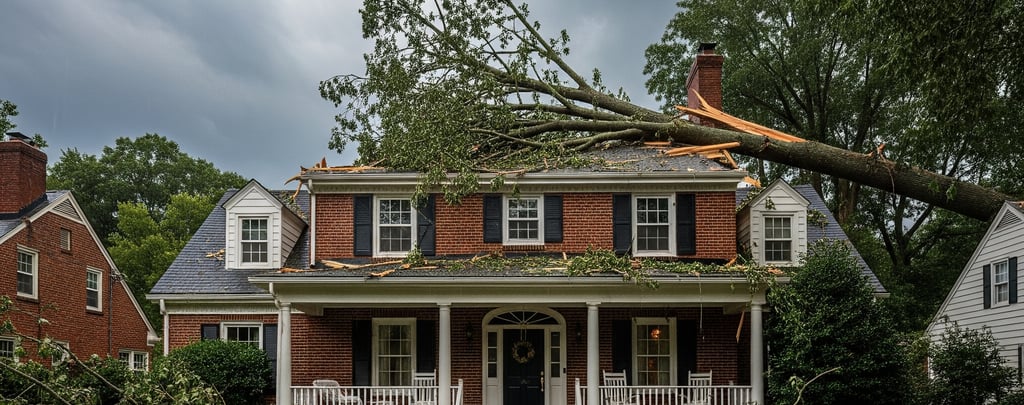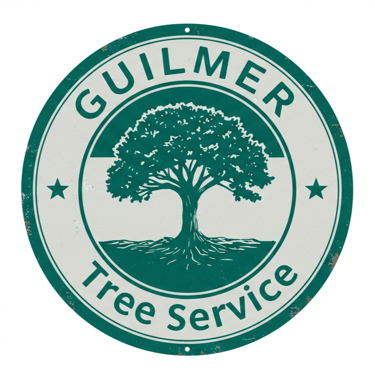Essential Tree Services Recommendations for Thunderstorm Season in Northern Virginia
Prepare your landscape for Northern Virginia’s thunderstorm season with expert guidance from Guilmer Tree Services. Our ISA-certified arborists cover pre-storm pruning techniques, risk assessments, and emergency tree removal strategies to protect your property from high winds and lightning damage. Discover proven maintenance and post-storm recovery tips to keep your trees healthy and your home safe year-round.
4 min read


Understanding Thunderstorm Risks for Trees
Thunderstorm season presents a significant risk to trees, particularly in Northern Virginia where severe weather patterns can be pronounced. High winds, heavy rainfall, and lightning strikes are common elements of thunderstorms that can have detrimental effects on tree health and stability. The force exerted by strong winds can lead to broken branches, uprooted trees, and severe structural damage, especially in older or weakened specimens. It is important to recognize that certain tree species are inherently more vulnerable to wind damage due to their growth habits and root structures.
Additionally, heavy rainfall can saturate the soil, weakening the foundation of trees and increasing the likelihood of uprooting. Trees with shallow root systems, such as certain ornamental varieties, are particularly at risk during periods of intense precipitation. Such conditions can create a hazardous environment, not just for the trees themselves, but for nearby structures and individuals. The fallout from a damaged tree can include obstructed roadways, damaged property, and potential injury to passersby.
Lightning strikes pose another significant threat during thunderstorms, as they can cause immediate and catastrophic damage to trees. The intense heat generated by a lightning strike can vaporize moisture in the tree, leading to internal fractures and bark stripping. This can result in long-term health issues for the tree and increase susceptibility to pests and diseases, which may exacerbate the risk of future failures. Local geography also plays a vital role in understanding these risks; for instance, trees located on elevated terrain may experience stronger winds than those in sheltered areas, further influencing the level of threat they face during a storm.
Understanding the risks that thunderstorms present to trees in Northern Virginia is crucial for homeowners and arborists alike. By being aware of the potential dangers and the vulnerabilities of specific tree species, proactive measures can be implemented to mitigate damage and enhance tree resilience during storm events.
Preparing Your Trees Before Storm Season
As storm season approaches in Northern Virginia, it is crucial for property owners to focus on preparing their trees to withstand severe weather conditions. Conducting routine tree assessments is essential for identifying potential hazards and determining the overall health of your trees. Regular inspection allows for early detection of disease, decay, or damage, ensuring that any issues can be addressed proactively.
One primary recommendation is to schedule routine pruning to remove any dead or overhanging branches. Pruning helps in reducing wind resistance, which can be crucial during a thunderstorm when strong winds can cause branches to break and fall. Furthermore, well-maintained trees are less prone to storm-related damage. It is advisable to prune trees at least once a year, preferably during late fall or early winter when trees are dormant, minimizing stress on the tree and encouraging healthy growth in the spring.
In addition to pruning, removing hazardous branches that pose a risk to structures, vehicles, and individuals is imperative. Professional tree services can assess your trees and identify which branches need removal based on their health and proximity to high-risk areas. They have the experience and tools necessary to safely execute these tasks, ensuring not only the safety of the trees but also the surrounding environment.
Consulting with certified arborists or tree care professionals can provide invaluable insights into maintaining tree health and stability. They recommend conducting these assessments at least once a year, but in storm-prone areas, more frequent checks may be beneficial. Being vigilant and proactive by ensuring your trees are in optimal health is a critical step in preparing for the storm season, ultimately protecting your property and enhancing the resilience of the trees during severe weather conditions.
Emergency Tree Services and Their Importance
During the storm season, the safety and preservation of property in Northern Virginia become paramount. Access to emergency tree services is vital in mitigating the risks posed by severe weather conditions. Trees are susceptible to damage from thunderstorms, often leading to hazardous situations involving fallen branches or even entire trees. Such incidents can result in significant property damage, injuries, and costly repairs. Therefore, having a reliable emergency tree service at the ready is crucial for homeowners and businesses alike.
Emergency tree services encompass a range of critical offerings designed to address urgent tree-related problems that arise post-storm. These services typically include immediate tree removal, branch trimming, and comprehensive debris cleanup. Quick action is essential to prevent further damage, particularly if a tree has fallen on a structure, vehicle, or power line. Skilled professionals are trained to assess the situation and execute timely removals while ensuring the safety of those involved and the surrounding environment. The urgency of these services cannot be overstated, as delays may exacerbate property damage and create additional risks.
One reliable option for residents in Northern Virginia is Guilmer Tree Services. Known for their commitment to responding swiftly and effectively, Guilmer Tree Services is equipped with the right tools and expertise to handle post-storm challenges efficiently. Their team is dedicated to providing prompt emergency response, ensuring that any tree hazards are addressed promptly. This level of readiness helps minimize the impact of storm damage, allowing homeowners to regain peace of mind and maintain their properties in safe conditions. With their seasoned approach to emergency tree services, Guilmer Tree Services stands out as a dependable ally during this tumultuous time.
Post-Storm Tree Assessment and Maintenance
After a storm has passed, assessing the condition of your trees is crucial to ensure safety and the ongoing health of your landscape. The first step in post-storm tree assessment is to inspect trees for visible signs of damage. Look for broken branches, cracks in the trunk, or uprooted roots. If a tree has lost a significant number of branches or has a split trunk, it may pose a safety risk and could require removal. Signs of internal decay or fungal growth around the base can also indicate that a tree is beyond saving.
It is essential to differentiate between trees that can be rehabilitated and those that should be removed. A tree can often be saved if it has sustained superficial damage, such as a few broken branches, but if the core structure of the tree is compromised, immediate action may be necessary to prevent hazards. Furthermore, consulting professional services like Guilmer Tree Services can provide valuable expertise in evaluating damage and determining the best course of action.
Once immediate threats have been identified, ongoing maintenance becomes vital to ensure the health and resilience of remaining trees. Regular pruning can help remove damaged branches and encourage new growth. Additionally, monitoring soil health through mulching and proper watering practices enhances root stability, giving trees a fighting chance to withstand future storms. Lastly, consider conducting periodic evaluations by certified arborists to catch potential issues early on, empowering homeowners to maintain a safer and healthier tree population in their vicinity.
Our Services
Tree Removal
Tree Trimming and Pruning
Stump Grinding
Bush Chipping
Hours & Information
© 2025. All rights reserved.
Monday to Friday : from 9:00 AM – 5:00 PM
on-site : from 8:00 AM – 6:00 PM
